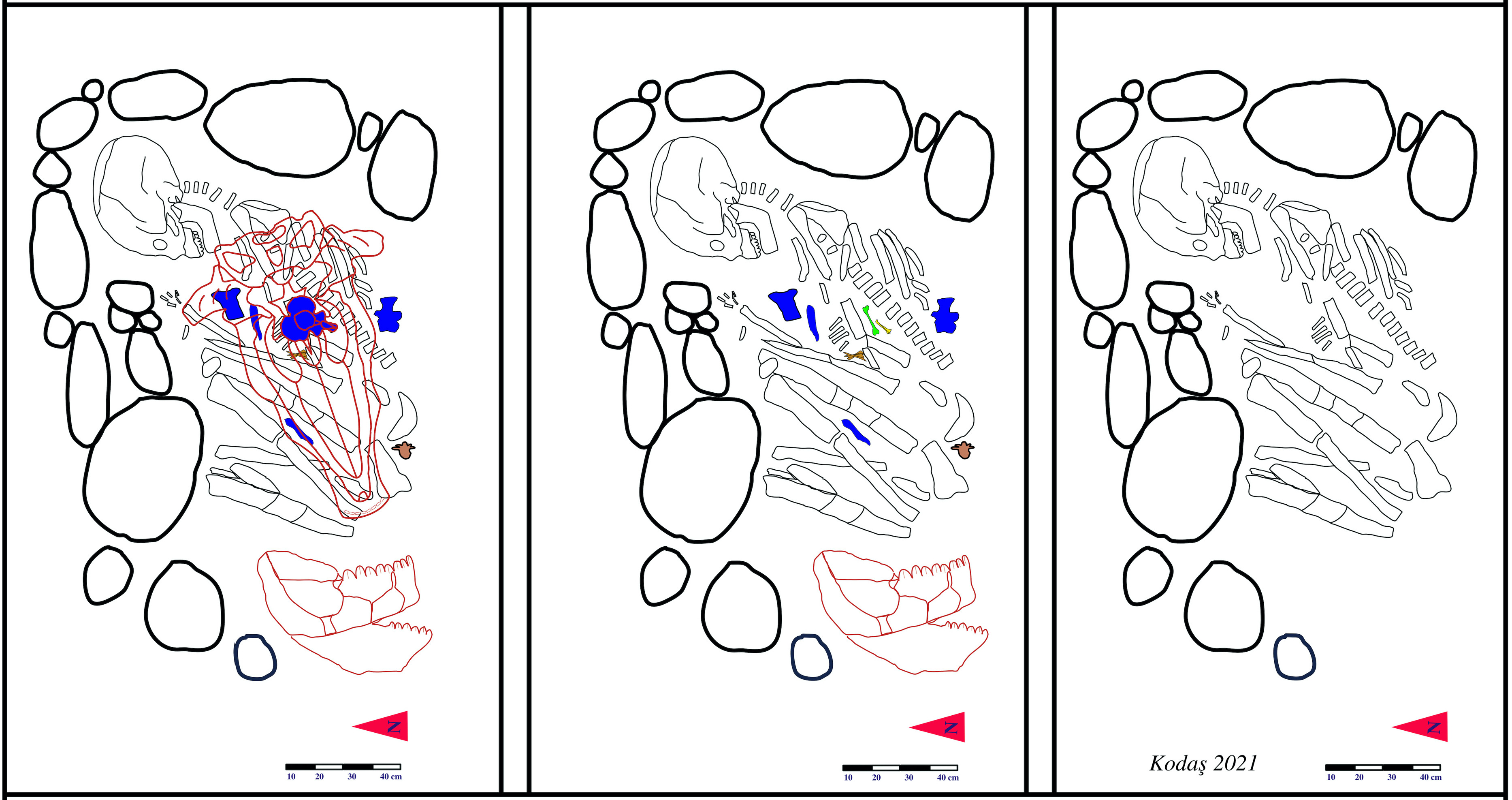A 12,000-year-old human skeleton found along the banks of the Tigris River may have belonged to a shaman who was believed to connect the natural world and the supernatural world. If that interpretation is on point, it would be the earliest known example of the complex cultural behavior reported in this part of the world.
The body, known as ÇH 2019/05, belonged to an adult female aged between 25 and 30. She discovered at the Neolithic settlement of Çemka Höyük in southeastern Türkiye under the floor of a building that was covered with limestone slabs.
Most unusually, she was laid to rest alongside the bodies of several other animals, including the remains of sheep or goats, partridge wings, marten legs, and the skull of an aurochs (the extinct wild ancestor of modern domestic cattle).
Dating to over 12,000 years old, the burial is exceptionally old, stemming from a period when all humans in the world were living as hunter-gatherers. However, bear in mind that this part of the world is full of archaeological surprises that show early developments of human culture, such as the world’s oldest temple Göbekli Tepe in southeastern Türkiye.
Given that agriculture hadn’t emerged yet, the animals must have been undomesticated and wild. Since the grave had been sealed, it’s highly unlikely the bones ended up there by accident.
Furthermore, it appears animal remains were consciously placed on different parts of the woman’s body. For instance, the main part of the aurochs skull was situated on her chest, while the jaw bone was laid by her feet.
An illustration from the study showing how the body was found alongside different bones.
Image courtesy of Ergül Kodas
In a new study, archaeologists and anthropologists from Mardin Artuklu University took a deep dive into this curious burial, concluding that the person was a shaman or perhaps had been buried by someone practicing a shamanistic ritual.
Shamans are people believed to possess the ability to communicate with spirits and guide their communities through rituals involving chanting, art, song, and the use of psychedelics. Many Neolithic cultures also dabbled with animism, the belief that all things – from animals and plants to rivers and weather – have a spiritual essence and, in a sense, are living.
Animals, in particular, were often seen as powerful spiritual beings and guides. They were also potent symbols that represented abstract concepts, like strength, power, and bravery.
Considering this context, the researchers conclude that they “strongly believe that burial ÇH 2019/05 at Çemka Höyük fits within the definition of shaman burial traditions.”
“[W]e can mark that she was treated differently than the other members of the community. [The] circumstances of this unique burial may indicate that she played a role in the relationship between the world of humans and animals, which could be understood that she may have been practicing what we relate nowadays with the practice of animism and shamanism,” the study authors write in their paper.
“On the other hand, we do not know what made her ‘special’. Perhaps she just was a ‘mad’ or ‘crazy’ person touched by the ‘spirits’ of the other world and therefore feared by the majority of the community and the Aurochs remains and the limestone slabs should ensure that she is not returning from the dead,” they write.
The study is published in the journal L’Anthropologie.
Source Link: A Bizarre Burial May Belong To A 12,000-Year-Old Female Shaman
